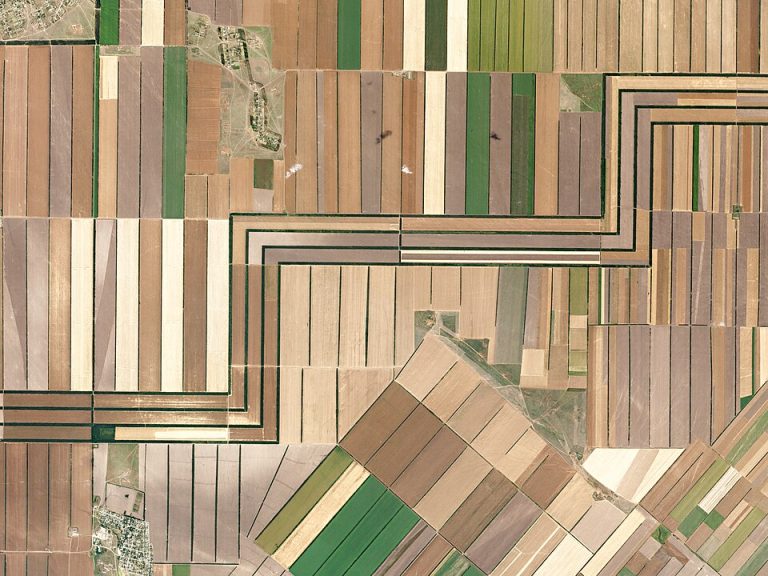News
EPO : new GMOs can be differentiated
According to companies, GMO products of genetic modification techniques are patentable because they are considered “inventions”. But to obtain these patents, the European Patent Office (EPO) require from the applicants to be clear about the techniques used for obtaining the organisms or genetic sequences covered by their patent. This obligation shows that, for the EPO, it is possible to differentiate, e.g. between GMOs obtained by patentable mutagenesis techniques on the one hand, and GMOs obtained by other techniques or any other organisms present in nature, on the other hand.

Inf’OGM recently exposed why new GMOs are patentable [1] when they are obtained by genetic modification techniques on cell cultures. But companies continue to argue that GMOs whose genetic modification is a mutation (and not a gene sequence insertion) are exempt from GMO legislation. Their reasoning is that mutagenesis techniques induce genetic modifications that are indistinguishable from what nature or other plant breeding techniques can produce and that “traditional” mutagenesis techniques are exempt from GMO regulation.
Frontier between patentable and non-patentable: the disclaimer
A patent application contains one or more claims which designate the invention to be protected by the rights granted by a patent [2]. These claims must be clear. The interest of an applicant is therefore to be as broad as possible. However, the EPO specifies in its own guidelines (see box below on guidelines) that it is sometimes necessary for patent applications to be supplemented with “negative limitations” to designate what is not covered by the patent application [3]. This is the case when part of the invention is partly covered by another patent or when unpatentable elements have to be excluded from the invention.
Essentially biological processes and their products are part of the last case since they are explicitly excluded from patentability by an exception given by the EPO law and the European law [4].![]()
Indeed, the 2019 version of the EPO Guidelines for Practical Examination states that “if a technical feature of a claimed plant or animal, e.g. a single nucleotide exchange in the genome (Editor’s note: a mutation) might be the result of either a technical intervention (e.g. directed mutagenesis) or an essentially biological process (a natural allele), a disclaimer is necessary to delimit the claimed subject-matter to the technically produced product“.
This quote from the EPO clarifies that a new GMO obtained by technical means, for example a mutagenesis technique implemented on cell culture, is patentable. However, the EPO considers that the patent granted can not concern organisms that have the same mutation but that have not been obtained by the process claimed in the patent application! Otherwise, the patent application will have to be rejected.
To put it more simply, the EPO requires from patent applicants to limit the scope of their patent to only those organisms or genetic sequences which have actually been modified by the process claimed and which cannot be an essentially biological process or a technical process (e.g. mutagenesis) which is insufficiently detailed and not reproducible by a skilled person in the art [5]! Any organism or genetic sequence which is identical but not obtained by this process will not be protected by the patent granted.
The disclaimer, a sometimes abstract format
These rules now imposed by the EPO go against the discourse usually heard in the case of new GMOs. Indeed, companies are accustomed to asserting that the mutation or mutations present in their GMOs obtained by techniques of directed mutagenesis as random could not be differentiated from mutations obtained by other techniques, or even appeared spontaneously. But the EPO, which grants them patents, does not share this opinion. Or, at least, it requires companies to explicitly exclude objects not covered by the patent. It must therefore necessarily be concluded that a differentiation must be made, on the basis of documentation or analysis.
With regard to plants in particular, the EPO gives a set of examples (non-exhaustive list) of formulations of technical means that are essentially biological processes or formulations of elements that are, on the contrary, patentable [6].
A disclaimer, what is it ? Translations difficulties.![]()
The Guidelines of the Examination in the EPO is a guide prepared by the EPO for patent applicants and examiners explaining the EPO’s approach to analysing patent applications. The term disclaimer is used in English in the French version of the Guidelines. No translation of the English term disclaimer is provided by the EPO, nor any precise definition in both version. The content of the disclaimer is not specified nor its legal scope. Globally, this term specifies what is not claimed by the patent application.
Disclaimers are required at least since 2019 in the field of biotechnology. Since that year, patent applications for biological material or microbiological processes must be accompanied by a disclaimer to be valid. This means that patents on new GMOs will have to state what is patentable (what is technical or what has been technically obtained) and explicitly exclude what does not derive from it.
But concretely what does that commit to? When new GMOs are concerned, the applicant must detail the techniques used, i.e. how he produced the GMO.![]()
This implies that the patent applicant is responsible for the difference between what he claims and what he does not claim. Therefore he must prove that the traits he claims (traits that could be native) were obtained with one of the techniques he has explicitly mentioned in his claims and not by a technique excluded by the disclaimer. The description provided in the patent application fulfills its role as a description, but doesn’t it have to be accompanied by a detection technique to prove it?
And if a detection technique is not an obligation under EPO law, is it not an obligation for the patent applicant to use it to enforce his rights granted by the patent against third parties? Let us recall that new GMOs are indeed detectable [7].
Granting of patents: constantly evolving examination guidelines
On November 19, 2020, the EPO announced that the next update of the guidelines was being finalized and would be published in March 2021. It is said that recent developments in biotechnology have been followed closely and will be reflected in this update. For the first time in the development of the guidelines, the finalization meeting was preceded by a public consultation of users.![]()
The annual revision of the guidelines is discussed and elaborated by two main actors: ![]()
the Institute of Professional Representatives before the European Patent Office (epi), ![]()
the Standing Advisory Committee before the EPO (Sacepo) which is composed of representatives from industry (nominated by Business Europe), professional representatives (appointed by the epi) and recognized experts in the field of intellectual property appointed ad personam by the President of the EPO.
[1] , « Les nouveaux OGM sont brevetables », Inf’OGM, 22 octobre 2020
[2] This may be a process or the characteristics of a product. The invention must be described, usually in positive and explicit terms that directly designate the subject matter of the patent application. The rights granted by the patent are mainly a monopoly and exclusive use of the invention for a given period of time.
[3] Voir Directives relatives à l’examen pratiqué à l’Office européen des brevets, édition 2019, également consultable en ligne
[4] Article 53b EPC and European Directive 98/44/EC. Essentially biological processes refer to processes that consist “entirely of natural phenomena such as crossing or selection”. Since the EPO’s decision of May 2020, these processes and their products have been definitively excluded from patentability. However, this exclusion from patentability of products derived from processes will only apply to patent applications filed after 1 July 2017.
Voir , « Produits issus de procédés biologiques : finalement non brevetables », Inf’OGM, 4 juin 2020
[5] To be valid, a patent application must contain a sufficiently detailed description to enable a person skilled in the art to reproduce the invention (Article 83 EPC).
[6] See G II, 5.4.2 and 5.4.2.1 of the directives relating to the practical examination, see also note 3.
[7] , « Tracer les nouveaux OGM est possible », Inf’OGM, 5 janvier 2021














